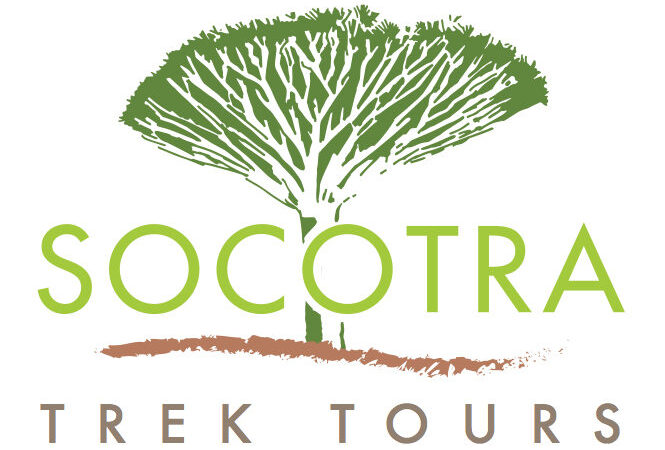Plants of Socotra
The island of Socotra, a UNESCO World Heritage Site is celebrated for its extraordinary biodiversity and distinct flora. Nestled in the Indian Ocean, Socotra is often referred to as the “Galapagos of the Indian Ocean” due to its high percentage of endemic species—nearly a third of its plant life is found nowhere else on Earth. This page is dedicated to exploring the rich tapestry of plant species that thrive on Socotra’s unique landscapes, from the iconic Dragon’s Blood Tree to the peculiar and picturesque Desert Rose.
Dragon’s blood tree (Dracaena cinnabari)
The Dragon’s blood tree is probably the most emblematic of Socotra’s unique flora. Its umbrella-shaped canopy is not only a striking feature of the landscape but also an ingenious adaptation to capture mist and dew, which condenses on the leaves and drips down to the roots. This adaptation is crucial for survival in the arid conditions of Socotra. The tree’s resin, known as dragon’s blood, is bright red and has been valued for centuries for its medicinal properties and as a dye. Today, the tree faces challenges from overgrazing and climate change, which threaten its ability to regenerate.

Bottle tree and the desert rose (Adenium obesum subsp. sokotranum)
The desert rose stands out with its swollen, water-storing trunk and beautiful pink flowers that add a burst of color to Socotra’s landscapes. Adapted to survive in drought conditions, the tree’s thick trunk serves as a reservoir to endure dry spells. The Desert Rose is not only a stunning sight during its blooming period but also a critical species for maintaining the ecological balance, providing shelter and moisture for various microorganisms and insects.

Cucumber tree (Dendrosicyos socotranus)
Unique among the flora of Socotra, the cucumber tree is the only tree-forming species in the cucumber family. With a thick, bottle-shaped trunk, this tree is an excellent example of how Socotra’s plants have adapted to store water. The Cucumber Tree is mostly found in the island’s dry plains, where it forms an important part of the local diet for both humans and animals, especially goats. The tree’s ability to provide sustenance in harsh conditions makes it a vital component of Socotra’s ecosystem.

Socotran Fig (Dorstenia gigas)
The Socotran fig, another remarkable bottle tree, is known for its peculiar growth form. This species has a swollen, twisted stem that seems to emerge straight from the rocks, making it one of the island’s most surreal and photogenic plants. It thrives in rocky habitats, which protect young seedlings from grazing animals, thus allowing them to mature into these bizarre yet fascinating forms. The plant’s ability to survive in minimal soil and its efficiency in water storage underscore its critical role in the ecological dynamics of Socotra’s rocky terrains.
The ecological significance of Socotra
Socotra’s ecological importance is monumental, not only for its rich biodiversity but also for its role in scientific research and environmental conservation. This isolated archipelago serves as a living laboratory, offering insights into the evolutionary processes that occur when species are separated from continental land masses. The distinctiveness of Socotra’s ecosystems can be attributed to its geographical isolation and the harsh, arid conditions that have shaped its flora and fauna in unique ways.
The island’s varied landscapes, which include sandy beaches, rocky highlands, and dense forests, create microenvironments where specialized plants have evolved. These plants not only dominate the local landscape but also play crucial roles in maintaining the ecological balance. They provide essential functions such as soil stabilization, moisture retention, and habitat formation for a myriad of organisms, some of which, like certain bird species, are critical pollinators for these plants.
Additionally, Socotra’s plants are integral to the global ecological network. They contribute to the carbon cycle and act as carbon sinks, albeit on a smaller scale compared to larger forests, yet crucially important due to their unique compositions. The endemic species, like the Dragon’s Blood Tree, are particularly significant because of their adaptability to Socotra’s limited freshwater resources, showcasing extraordinary evolutionary traits that offer lessons in resilience and sustainability.
Ready to visit Socotra?
Let’s get in touch!
Adnan, ready to make your journey unforgettable.

